Black mildew disease on the neotropical medicinal shrub Pothomorphe umbellata in Brazil, caused by Irenopsis tortuosa var. potomorphes
D. B. Pinho A , O. L. Pereira A B , A. Nicoli A , J. Honorato-Junior A and C. A. D. Bragança AA Departamento de Fitopatologia, Universidade Federal de Viçosa, 36570-000 Viçosa, MG, Brazil.
B Corresponding author. Email: oliparini@ufv.br
Australasian Plant Disease Notes 4(1) 84-86 https://doi.org/10.1071/DN09036
Submitted: 6 July 2009 Accepted: 30 July 2009 Published: 24 August 2009
Abstract
A black mildew disease caused by Irenopsis tortuosa var. potomorphes (Meliolales) was observed on leaves of the neotropical medicinal shrub Pothomorphe umbellata collected in a stretch of Atlantic rain forest in the municipality of Viçosa, Minas Gerais, Brazil. This is the fourth record of Irenopsis tortuosa var. potomorphes on Pothomorphe umbellata and the first record of this fungus in Brazil.
Introduction
Pothomorphe umbellata (L.) Miq. (Piperaceae), also known as ‘pariparoba’ is a native plant endemic to a stretch of Atlantic rain forest in the municipality of Viçosa, Minas Gerais, Brazil, growing under shaded sites (Carvalho-Okano and Alves 1998) (Fig. 1). This species has been the subject of many pharmacological studies into its therapeutic properties, including photo-protection, anti-inflammatory, analgesic, anti-venom and anticancer activity (Sacoman et al. 2008).
Materials and methods
In April 2008, plants of P. pothomorphes were found colonised by a black mildew fungus in the ‘Mata da Agronomia’, Universidade Federal de Viçosa, Viçosa, state of Minas Gerais, Brazil (Fig. 2). Samples of infected leaves were collected, photographed and dried in a plant press. Observations and measurements were carried out by means of a Carl Zeiss Standard W and photographs by means of an Olympus BX 51 light microscope fitted with a digital camera (Evolt E330). Wherever possible, 80 measurements were made of the structures mounted in lactophenol.
Taxonomic description Irenopsis tortuosa (G. Winter) F. Stevens var. potomorphes (Cif.) Hansf
A description of the fungus on host tissue follows. Colonies on the adaxial surface of leaves, mostly epiphyllous, black, velvety, scattered, numerous, up to 1–2 mm in diameter. Internal mycelium not observed. External mycelium adaxial, net-forming, sinuous to tortuous, branching usually opposite, acute, composed of dark brown septate hyphae, 12–30 × 5–8 μm in diameter, loosely reticulate, producing appressoria and conidiogenous cells. Appressoria alternate to unilateral, spreading to antrorse, straight to curved; stalk cells cylindrical to cuneate, 3–11 × 4–8 μm; head cells ovate to globose, entire, 10–16 × 10–16 μm. Conidiogenous cells (phialides) mixed with appressoria, alternate to opposite, ampulliform, 15–25 × 5–10 μm (Fig. 3). Perithecia black, scattered, globose, verrucose, 90–225 μm in diameter (Fig. 4). Perithecial setae 3–11, erect-spreading, simple, obtuse, continuous, dark brown, the upper part irregularly twisted to uncinate (Fig. 5), 120–198 × 7–11 μm. Asci evanescent. Ascospores oblong to subellipsoidal, hyaline when inside the ascus, becoming brown with age, broadly rounded at the ends, 4-septate, constricted at the septa, 32–50 × 10–18 μm.
Material examined: VIC 31207, on leaves of P. umbellata, Mata da Agronomia, Viçosa city, State of Minas Gerais, Brazil, J. Honorato-Junior, April 2008, VIC Herbarium
The black mildew fungus found on P. umbellata belongs to the genus Irenopsis by possessing only perithecial setae and differs from Appendiculella by the presence of perithecia with larviform appendages on the latter. Meliola have setae on external mycelia and Asteridiella differs from all others by its glabrous perithecia and mycelia (Hansford 1961). Three species belonging to the Meliolales are known to occur on P. umbellata. viz. Meliola piperina Syd. and M. stenospora G. Winter reported in Ghana, Irenopsis tortuosa (G. Winter) F. Stevens reported in Puerto Rico and Virgin Islands and Irenopsis tortuosa (G. Winter) F. Stevens var. potomorphes (Cif.) Hansf. reported in the Dominican Republic, Puerto Rico and Virgin Islands (Hansford 1961; Farr and Rossman 2009). The fungus found on P. umbellata in Brazil matched well with the description of I. tortuosa var. potomorphes due to its thin colonies and uncinate to twisted perithecial setae, while I. tortuosa showed dense colonies and coiled perithecial setae (Hansford 1961). This forms the first report of I. tortuosa var. potomorphes in Brazil.
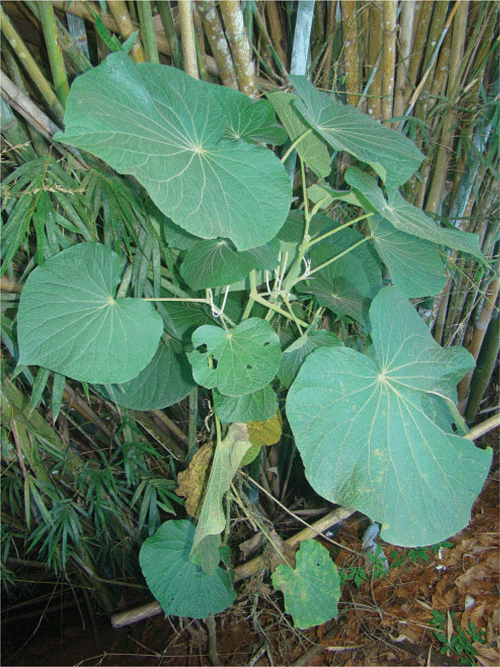
|
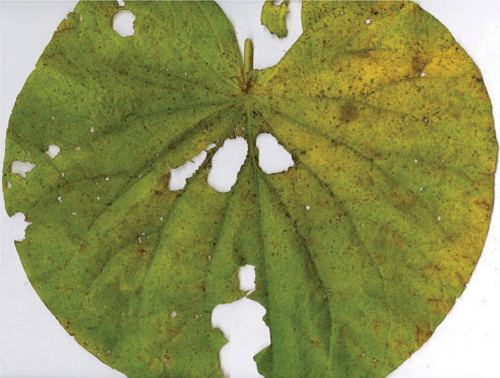
|
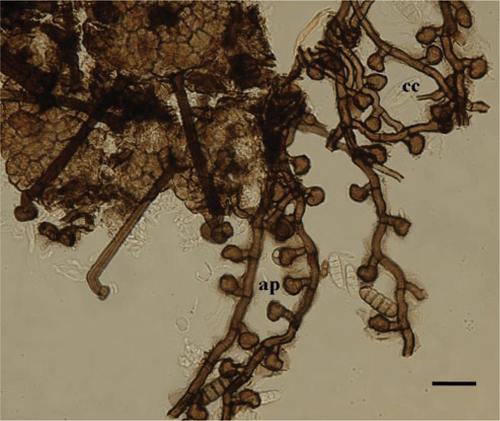
|
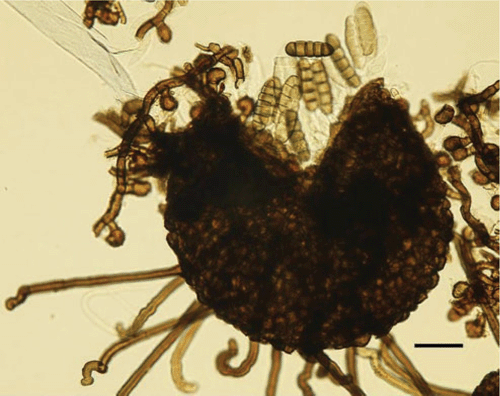
|
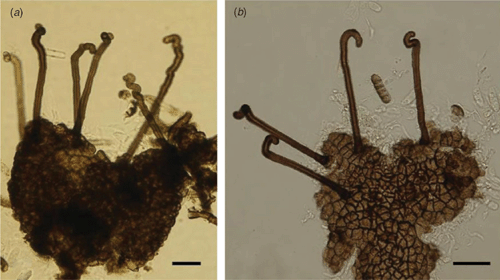
|
Acknowledgements
The authors wish to thank the Departamento de Biologia Vegetal of the Universidade Federal de Viçosa for providing support on plant identification, particularly to Gilmar R. Valente. This work is part of an ongoing program of surveying and describing the foliicolous and phytopathogenic mycodiversity of a stretch of Atlantic rain forest in the municipality of Viçosa, Minas Gerais, Brazil
Carvalho-Okano RM, Alves SAM
(1998) Piperaceae C. Agardh da estação experimental Mata do Paraíso, Viçosa, MG. Acta Botanica Brasilica 12, 497–513.

Hansford CG
(1961) The Meliolineae – A monograph. Beihefte Sydowia 2, 1–806.

Sacoman JL,
Monteiro KM,
Possenti GM,
Figueira MA,
Foglio MA, Carvalho JE
(2008) Cytotoxicity and antitumoral activity of dichloromethane extract and its fractions from Pothomorphe umbellata. Brazilian Journal of Medical and Biological Research 41, 411–415.
| Crossref | GoogleScholarGoogle Scholar |
CAS |
PubMed |



